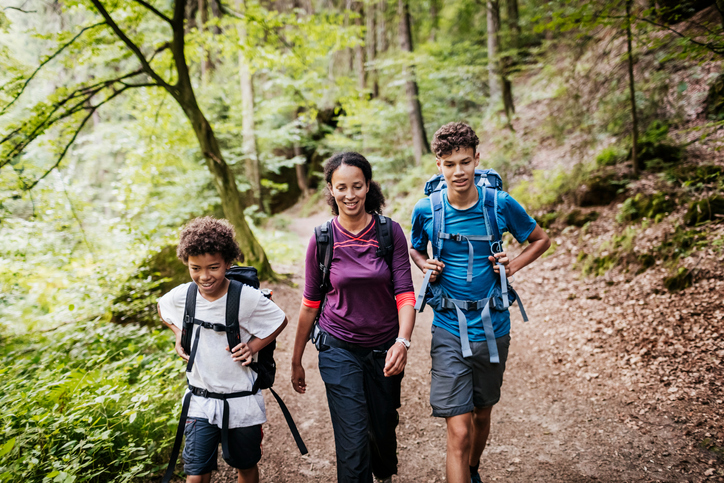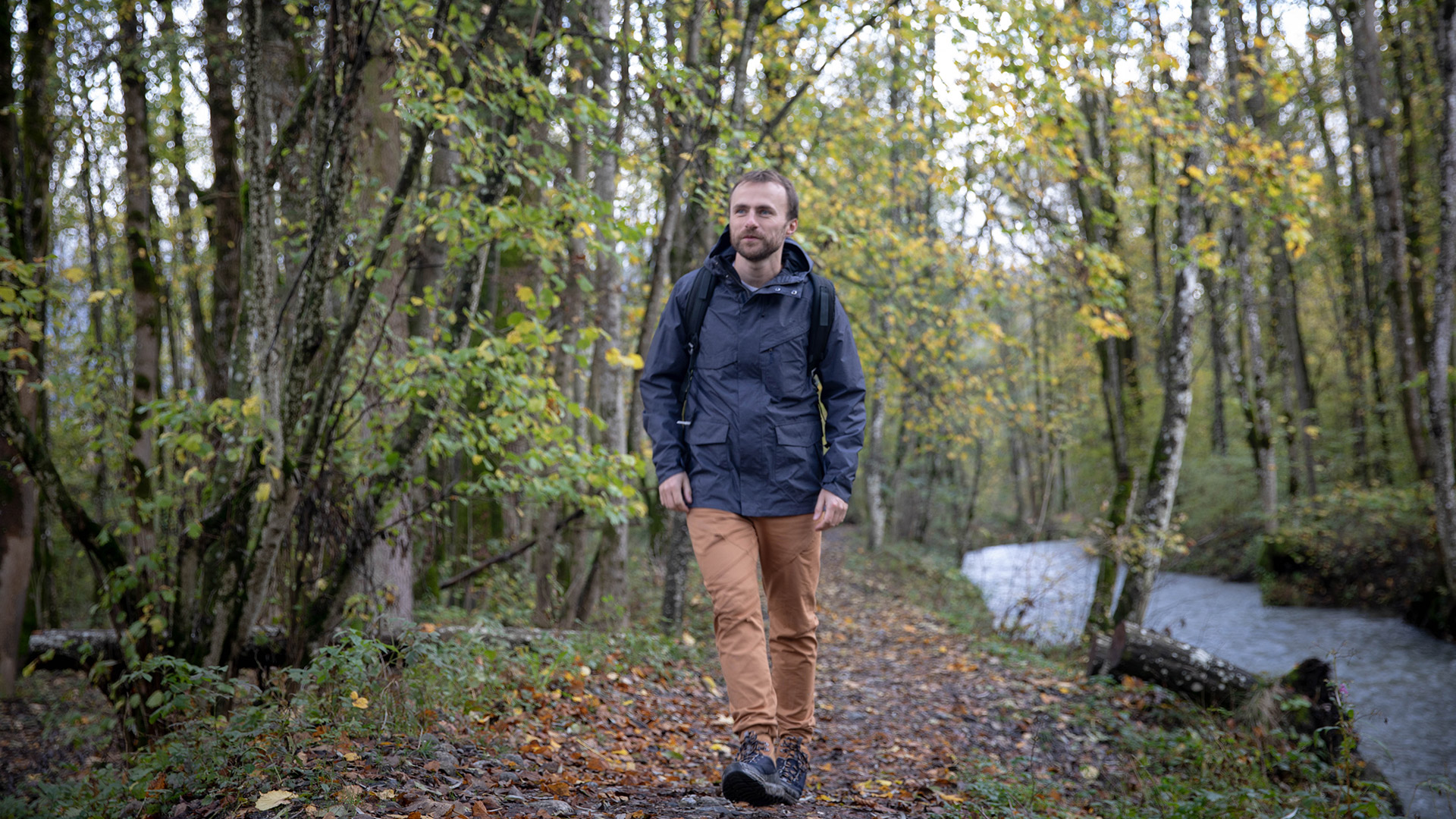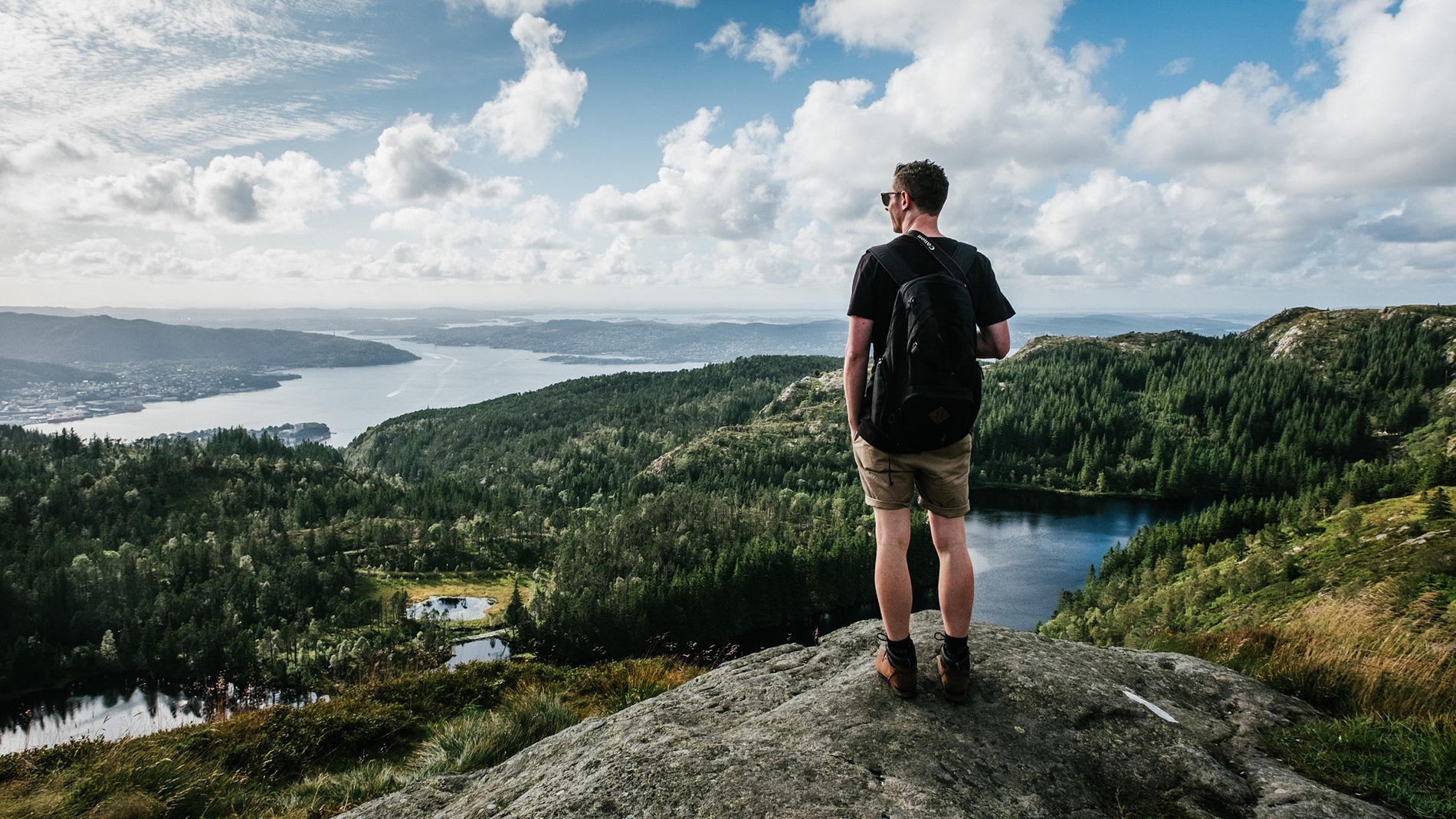Day hike essentials: what to pack for a single day trip
Heading out on the trails? Don't forget these day hike essentials

When going hiking, the right day hike essentials are something you should look out for. Day trips are a nice way to enjoy the landscape without committing several days to a hike, but they still require a bit of forethought and planning. As with any type of physical activity, you’ll need to ensure that you’re kitted out in appropriate clothing so that you can stay dry, warm and comfortable throughout the day.
Nature can also be unpredictable, so you’ll need to ensure you’re prepared for any emergencies and well-stocked with snacks and water to keep you fueled and hydrated. Read on for our day hike essentials that will prepare you for a fun day out!
Plus, have a look at our guide for the best hiking backpacks in which to store your kit.
1. Hiking boots
Your feet are going to get you from A to B, so it’s important to take good care of them by choosing the best boots and socks that will stop sores and blisters from ruining your hiking experience. Take a look at the best hiking boots for men and the best women’s hiking boots to see if it’s time to invest in a new pair of shoes.
While good hiking boots are important, you also need to consider how good your socks are, as they are generally the thing rubbing your feet. Have a look at our guide to the best hiking socks on the market, and while you’re at it, our tips on how to prevent blisters might give you a head start in protecting your feet.
2. Appropriate clothing
Whether you’re a seasoned hiker or just starting out, you will need to wear suitable clothing to keep you comfortable and at a good temperature while you’re out on the trails. Chaffing can ruin a perfectly nice walk, so we recommend a pair of the best walking trousers. If you’re more of a hiking leggings person, we have a guide for that too.
Omar Villafuerte, a qualified mountaineer, says the right and wrong gear can be trip altering. “Picking clothing that is both lightweight and durable in 70mph winds is essential,” he says. “Learning how to layer during activity and downtime is important for a successful trip.”
Get all the latest news, reviews, deals and buying guides on gorgeous tech, home and active products from the T3 experts

3. Weather protection... for sun or rain
Even if the weather forecast says you will be hiking under glorious sunshine, pack a waterproof jacket just in case. An extra layer provides you with some warmth and keeps the elements off should it rain or snow.
Villafuerte also stressed the importance of sun protection. “As strong as some of us may feel, the sun is even stronger,” he says. “I always carry protective layers, sunscreen, lip balm, and even side protection for my eyes.”
Sunburn may not seem too dangerous, but having five or more sunburns more than doubles your chance of developing melanoma, a form of skin cancer. Remember to cover all exposed skin with sunscreen and reapply every hour in midday sun if you can.
4. Food and drink
You must endeavour to stay properly hydrated when hiking and replace the water you lose through sweat. On average, people need to be drinking two to three litres of water a day. This increases when doing moderate exercise like hiking, where you will need to be consuming at least a litre every two hours to replace water loss. We have a round up of the best hiking water bottles if you’re thinking of getting a reusable bottle for your trips.
You also need to be replenishing your energy levels throughout the day. High calorie snacks like nuts and dried fruit are excellent sources of energy and easy to eat on the go (there’s a reason it’s called trail mix). You can also pack glucose sachets or chewables to keep you going throughout the day, but try to make sure you eat at least three proper meals too. Build on a good, balanced breakfast like oatmeal and ensure that you’re getting enough protein to help your muscles repair themselves after your hike.
5. A navigation aid
You need to know where you’re going, even if you’ll only be out for the day. Villafuerte recommends you not only plan your route, but bear in mind the steepness of the terrain so that you don’t overestimate yourself. “The contour lines allow you to read the steepness of an area so you can plan effectively,” he says. “Anticipate problems before you step out and always think about the return.”
One of the best hiking GPS systems is designed specifically to keep you on the right track, although if you already have an outdoor watch, that'll also do the job.

6. Emergency kit
Even though you only plan to be hiking for a day, it’s important that you’re prepared for an emergency. The following are all good to include in your day pack:
- A first aid kit - containing bandages, disinfectant wipes, various sizes of dressing, gloves and burn dressings.
- A bivy bag - in case you get trapped out overnight, bivvies are lightweight so won’t be much of a hindrance to carry and can protect you from the elements.
- A head torch - if you’re hiking at night or returning late, a head torch has the benefit of being hands-free and can prevent injury on uneven or unfamiliar terrain.
- A spare layer - you may be grateful for another layer if you get to high altitudes or the weather changes.
- Toilet paper - if you need to go, you need to go, so make sure you’re prepared.
- Repair kit - you shouldn’t have to use it, but if your backpack, boots or clothing become damaged or break you’ll be glad you brought it along.
“I would rather have to carry gear I did not need than make it to the base of a mountain and realise I needed those crampons after all,” Villafuerte adds. “I always scout my expeditions as much as I can. I read weather reports, look at online reviews, and the history of the area to make a decision on everything I would need.”

Lou Mudge is a Health Writer for Future Plc, working across Coach, Fit&Well, Live Science, TechRadar, T3 and Tom's Guide. Based in Bath, UK, she has a passion for food, nutrition and health. She's eager to demystify diet culture in order to make health and fitness accessible to everybody, and is a champion of sustainable training and eating practices. Multiple diagnoses in her early 20s sparked an interest in the gut-brain axis, and the impact that diet and exercise can have on both physical and mental health. She was put on the FODMAP elimination diet during this time and learned to adapt recipes to fit these parameters, while retaining core flavours and textures, and now enjoys cooking for gut health.
